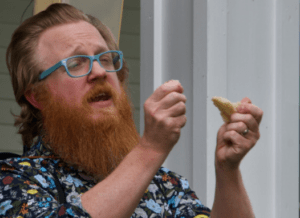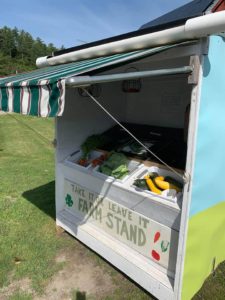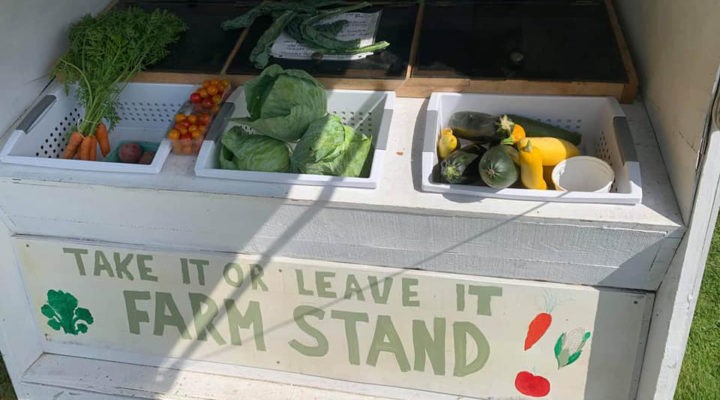During my last semester at Wake Forest University’s School of Divinity, I walked the brick pathway of Hearnz Plaza with one of my professors. Our conversation’s focus was on my future plans to move away from my native North Carolina and head north to the state of Vermont to become the pastor of a village church (yeah you heard that right, an actual village).

Justin Cox
As we talked of the move, I lamented my future loss of fried okra, Krispy Kreme doughnuts and the ability to order mac & cheese as a vegetable on restaurant menus. Yet, there was much excitement around welcoming such a big change. We talked of how I envisioned my role as being a community pastor who sat and walked, laughed and cried, prayed and probably even cussed a little with the folks I planned on doing life with for the foreseeable future.
As we were about to part ways, he told me he was thrilled to see what this call would mean for me, my family and the people I was going to serve as pastor. He then gave me a charge fit for an ordination service: “Just go there and find a new way to keep telling the Jesus story.”
The farm stand
The “Take It Or Leave It” farm stand that sits on the property of the United Church of Lincoln is one of those “new ways.”
 Standing at a little more than 6 feet tall and close to 5 feet wide, the farm stand is a visible beacon that first popped up on the edge of the church property two years ago. The white paint that coats the majority of the structure was left over from a previous project (no sense in buying more paint when a neighbor probably has a gallon or two to spare). Lumber was provided by a local company to get the project going. A small green, red and white awning was donated and acts as a bit of shade for folks taking a peek. The “Take It or Leave It” sign is hand painted along with a couple of other designs displaying examples of possible produce that may be found there.
Standing at a little more than 6 feet tall and close to 5 feet wide, the farm stand is a visible beacon that first popped up on the edge of the church property two years ago. The white paint that coats the majority of the structure was left over from a previous project (no sense in buying more paint when a neighbor probably has a gallon or two to spare). Lumber was provided by a local company to get the project going. A small green, red and white awning was donated and acts as a bit of shade for folks taking a peek. The “Take It or Leave It” sign is hand painted along with a couple of other designs displaying examples of possible produce that may be found there.
Traveling up and down the road, folks catch sight of it while in the middle of a slight curve that separates the village center from the steady waters of the New Haven River. If a driver were to stop for a better look in the late evening, they would find a small pull-off to accommodate them right in front of the stand. Moseying on up, they might be surprised to discover motion-sensor lights that make navigating the inside of the stand fairly easy. The lights are powered by solar panels which, like the paint and other supplies, were donated by neighbors who own a solar-based energy solution company.
Lights are not the only thing the solar panels help with. Fresh produce doesn’t last long here, but just in case, there’s a simple cool air system that distributes enough chill to keep the vegetables from wilting during the peak temperature weeks of Vermont summers. Rows of both covered and open containers house all sorts of produce — squash, carrots, cabbage, tomatoes, corn, several varieties of beans and more zucchini than any one community should be able to produce, let alone eat.
A bountiful harvest
Hanging baskets were installed in the ceiling to add more storage space, but vegetables are not the only things showing up there. The farm stand has developed into a place where those who see the benefit of it are inclined to utilize it in different ways.
 One morning I stopped to scope the usual goods and found small bags of flavored seasoning. A community member had taken some of the chili peppers they had grown and mixed them with salt to create a delicious dry rub. On another occasion, a 5-gallon bucket was left beside the farm stand with freshly picked bouquets of local flowers. A day or two later, someone who had taken some of the flowers home left a touching thank you note of how that small act of thoughtfulness really changed their day for the better. Those with mature green thumbs have dropped off starter plants, mostly in the form of herbs, for people to take home and give home gardening a go for themselves.
One morning I stopped to scope the usual goods and found small bags of flavored seasoning. A community member had taken some of the chili peppers they had grown and mixed them with salt to create a delicious dry rub. On another occasion, a 5-gallon bucket was left beside the farm stand with freshly picked bouquets of local flowers. A day or two later, someone who had taken some of the flowers home left a touching thank you note of how that small act of thoughtfulness really changed their day for the better. Those with mature green thumbs have dropped off starter plants, mostly in the form of herbs, for people to take home and give home gardening a go for themselves.
The farm stand encourages community and neighborliness through invitation and participation. Several families in the church, especially those closer to the village center, leave and take produce several times a week during the summer and early fall. However, there are many people who have no connection to the church who stop by and make use of the farm stand.
The stand means something to this crowd. Something they find outside of Sunday morning services. This is true to some extent of the church building as well.
Church as village center
I learned of this broader appreciation when hearing how in the early 1980s the church building was destroyed by a fire. As the talk of rebuilding began, there was an outpouring of community concern to keep the church at its center. This decision expressed the collective desire for a place of prayer and worship to be accessible to all. The final result was moving the Methodist church that was farther up the mountain down to the village center and placing it atop the old Baptist church foundation.
Scott Hagley, author of Eat What Is Set before You: a Missiology of the Congregation in Context, describes the value of proximity found in close communities and neighborhoods: “Living within walking distance of one’s church community creates the possibility not only for neighborly connection with one another, but also for the shared rhythms of Christian practice throughout the week.”
“The farm stand has come to represent such a place, an access point that blurs the line of sacredness.”
The farm stand has come to represent such a place, an access point that blurs the line of sacredness by offering a space where those uncomfortable with problematic symbols, like those of church steeples and altar tables, can still come and feel they are fully included.
As a church, we are actively engaging in what our common concerns and hopes for our community are by asking the question of how we can live out the reconciling power of Christ with our neighbors. This question has led us to the table and, more directly, to food and the land yielding it.
Farm stand as Lord’s Supper table
While there is much variety to the Baptist faith, the importance of the Lord’s Supper is unanimously one of two sacred ordinances. Baptist historian Bill Leonard writes in The Challenge of Being Baptist: Owning a Scandalous Past and an Uncertain Future “Baptist churches could reexamine the meaning of believer’s baptism and the Lord’s Supper and the role of these sacraments, not simply within the congregation but within the entire church of Christ.” What is happening at the United Church of Lincoln is a community’s attempt at reexamining the Lord’s Supper, or rather yet, reimagining what an open-table theology could really look like when a church wishes to feed its neighbors.
The farm stand is radical, bold and a new vision of an extended altar table, the bread and wine now replaced with tomatoes and squash.
The “Take It or Leave It” sign hanging from the front is now a contemporary expression of the Psalm: “O, taste and see that the Lord is good.”
“We raised our coffee mugs, and we broke chocolate chip zucchini bread. We offered thanks to God for the company of each other.”
This new image is palpable to a larger community who may not be familiar with older images or language, and it offers the potential to reconcile elements that are thought to be exclusively available only for those holding authority within the church. Yet, like the infinite God experienced in the incarnate personhood of Jesus, something previously thought unobtainable and lofty in essence, the kingdom of God or God’s new day, has now been made known. It has come near. It is obtainable in the here and now.
How do I know this? On a recent morning I visited a church member’s home. I sat with her and her spouse on their front porch (with a respectful amount of social distancing taking place) and talked of many things, some related specifically to faith and some things not so much. She served me coffee, and I offered them bread I had baked the night before made from an unknown neighbor’s zucchini I took from the farm stand.
We raised our coffee mugs, and we broke chocolate chip zucchini bread. We offered thanks to God for the company of each other. After we blessed those divinely odd elements, we recalled and shared stories worth telling — unaware while we did this of where the Communion table started or where and if it ended.
We practiced remembrance and proclamation. That morning, we found a new way to tell the Jesus story.
Cheers to the God who has asked for our participation.
Cheers to the God who beckons us to find unconventional altars.
Cheers to the iconoclasts who take God up on the offer.
Justin Cox serves as senior pastor of the United Church of Lincoln, Vt. He received his theological education from Campbell University and Wake Forest University School of Divinity. He enjoys reading, amateur gardening and helping his spouse, Lauren, chase their daughter, Violet, all over the village of Lincoln. He is an ordained minister affiliated with the Cooperative Baptist Fellowship and is currently enrolled in the doctor of ministry program at Pittsburgh Theological Seminary.


